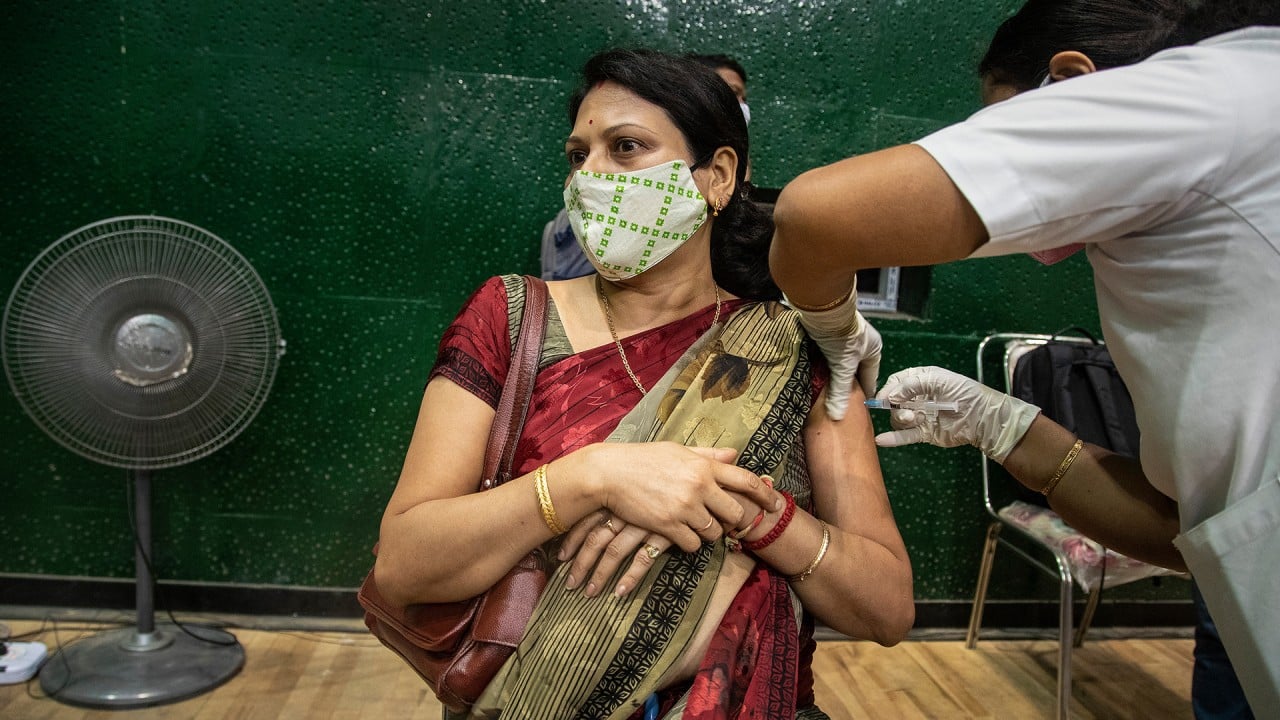
China’s world-factory status gets boost as coronavirus ravages India and other developing Asian countries
- Money flowing into north Asia as investors have been selling financials, industrials and materials in India while buying those in Korea and Taiwan
- China’s advantage as a manufacturing powerhouse remains resilient while its neighbours struggle to reinvigorate their economies
A sharp uptick in coronavirus cases in India and several Asian countries is diverting business to China, ensuring that its manufacturing engine will continue being the main driver of global trade demand, analysts said, pointing to the resilience of China’s economy and capital flows.
Last year, the Asia-Pacific region outperformed amid its significantly lower infection and death rates relative to other regions. However, several domestic economic recoveries are being threatened by a combination of the emergence of more virulent strains globally, recurring waves of Covid-19 and sluggish progress in public vaccinations, according to analysts.
Of particular note is India, which has seen daily Covid-19 cases surge to unprecedented levels, making it the second-worst-hit country based on total infections.

03:26
India’s mass-vaccination drive falters as country hits 20 million coronavirus cases
“Previously, everyone thought China’s lead in getting the virus under control would fade away as the US and UK gradually opened up their economies and boosted global demand,” said Carie Li Ruofan, an economist at OCBC Wing Hang Bank.
“But because the epidemic is still quite severe in parts of Asia, China is going to have to keep playing the role as the world’s factory.”
Buoyed by strong exports and industrial activity, China’s economic growth is forecast to rise to 8.5 per cent this year from 2.3 per cent in 2020, according to Goldman Sachs’s chief Asia economist Andrew Tilton.
In contrast, Tilton cut his GDP growth forecast for India to 10.5 per cent from 10.9 per cent this year; to 2.1 per cent from 3.4 per cent for Thailand; and to 2.5 per cent from 2.9 per cent for Japan.
“Policymakers want to avoid repeating the economic and social challenges of nationwide lockdowns imposed a year ago,” Tilton said. “Still, the restrictions are posing a meaningful drag on activity in India and several countries in Southeast Asia.”
The degree to which the Covid-19 outbreak is being brought under control, along with export momentum in Asia, also means various capital flows and currencies are performing differently, according to analysts.
At the opposite end of the spectrum, sentiment is dented for India’s rupee, Indonesia’s rupiah and Thailand’s baht because the still-high number of infections in those countries poses considerable downside risks to their currencies, Heng said.
Even though the Indian and Chinese stock markets are favourites among global emerging investors, with the two receiving consistent inflows since the beginning of 2020, money has recently been flowing out of India into north Asia as both foreign and domestic investors have been selling financials, industrials and materials in India while buying those in Korea and Taiwan, said Manishi Raychaudhuri, head of Asia-Pacific equity research and of Asia ex-Japan equity strategy at BNP Paribas Securities.
Emerging-market securities attracted around US$45.5 billion from non-resident portfolio flows in April – the highest total in three months, which were mainly supported by China flows: US$4.8 billion into China’s debt market and US$13.5 billion into Chinese equities, according to the Institute of International Finance.

